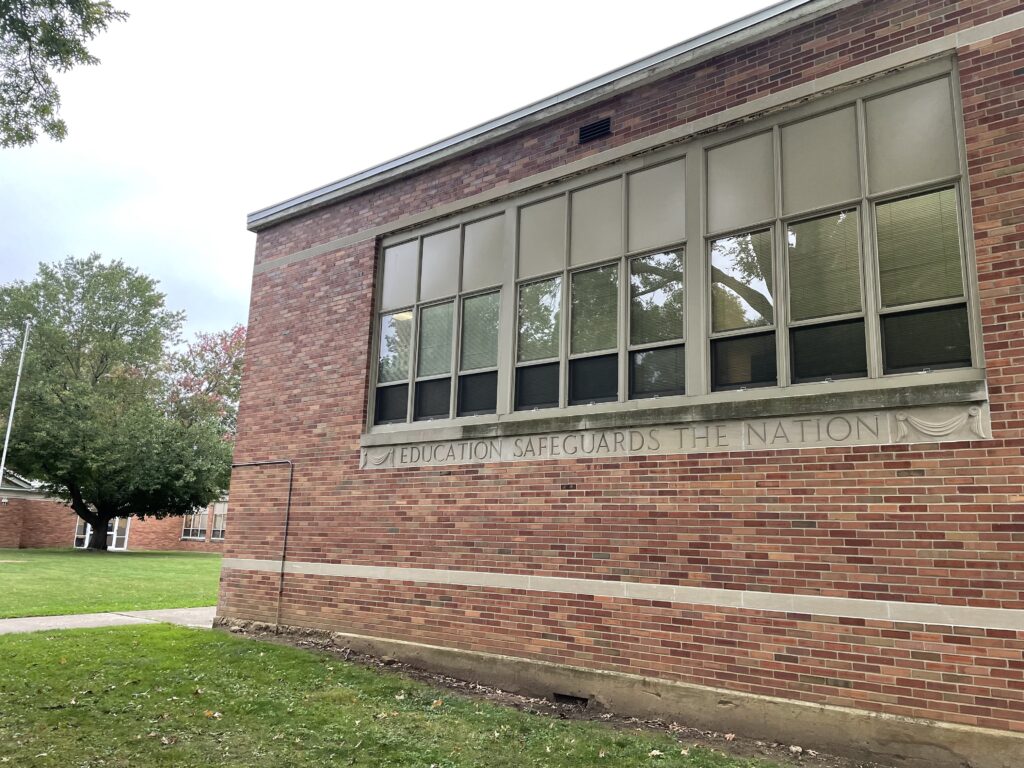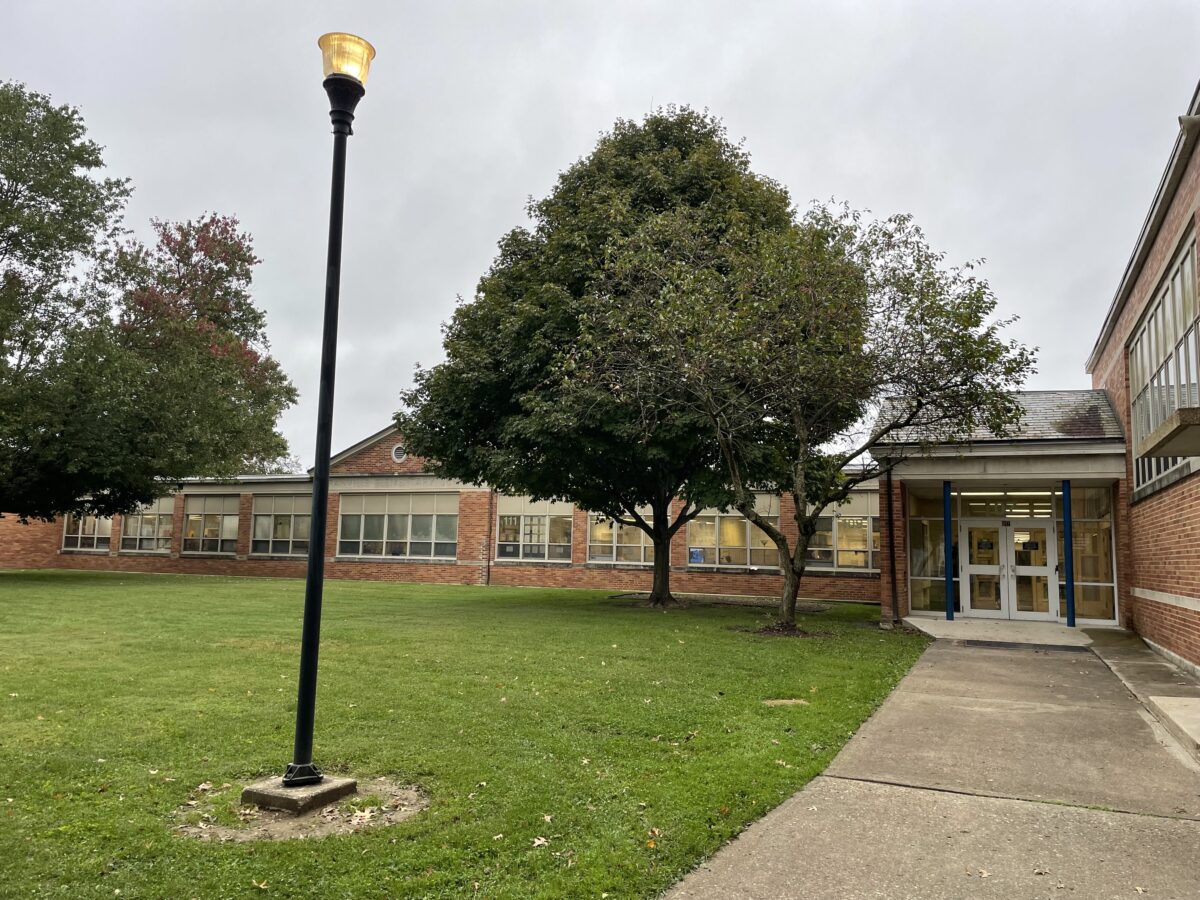A new study commissioned by Granville schools indicates that enrollment in the district is likely to double in the next 30 years.
The study by Cooperative Strategies projects an enrollment increase from the current 2,535 students to well over 5,000 by 2050. The projection shows a steep rise in enrollment beginning in about 2025 – the same year that Intel is scheduled to begin operations at its new computer-chip manufacturing campus 10 miles west of Granville.
“There’s no doubt we’re going to change,” said Jeff Brown, superintendent of Granville Exempted Village Schools. “The question is how, and can we be intentional about it?”

Granville school buildings are already near capacity, Brown said, and recent historical growth had been at a relatively slow, incremental pace upward. But enrollment is already starting to outpace projections from before Intel announced its big development plans. The district had predicted 146 kindergarteners this year but enrolled 183.
And doubling the district enrollment in 28 years will require more land for school buildings and funds for construction of those buildings – and quickly.
Planning by the school district and the Village of Granville to manage growth shifted into high gear when Intel announced in January that it intended to build one of the world’s largest computer-chip manufacturing operations in western Licking County. The initial Intel investment of $20 billion is expected to bring 7,000 long-term construction jobs and at least 3,000 permanent jobs – paying an average of $135,000 – to Licking County.
The expectation, said Brown and Village Manager Herb Koehler at a recent meeting with Denison University journalism students, is that at least some of those workers will want to live in the Granville area because the school district is high-performing and highly rated among Ohio schools.
Cooperative Strategies, which has an office in suburban Columbus, presented its study to the school board in August. The school board meets again at 6:30 p.m. on Monday, Sept. 19, at the board offices at 130 N. Granger St.
The elementary school is at about 90% capacity, and the intermediate school is at almost 100% capacity. The middle school is at about 79%, and the high school is at nearly 81%, according to the Cooperative Studies report, which Brown said the Granville Board of Education commissioned in May and was delivered to the board in August.
Brown, who helped manage the challenges of rapid growth when he served as an administrator and interim superintendent at Olentangy Local Schools north of Columbus, said the Granville school district needs as much runway as possible to handle the projected growth. That means working with other local government agencies to slow the pace as much as possible.
“You can’t land a C-130 (military transport plane) at the Licking County Airport,” he said. “The runway just isn’t long enough. It’s all about that runway.”
Brown and Koehler said that local stakeholders – officials from the school district, village, township, Denison University, the Granville Chamber of Commerce and the Granville Recreation Commission – realized immediately after the Intel announcement that they would have to work together to extend the runway for managing growth. They also need to work with neighboring communities, they said.
Brown and Koehler noted that new residents of the school district wouldn’t necessarily live within the Village of Granville. Nearly half of the land in the Granville school district is agricultural land, Brown said, and a good bit of that land is in Granville Township. Portions of the school district, however, are in Newark and unincorporated areas of Union Township, which could be annexed into neighboring cities such as Heath.
Heath and Newark have zoning codes that allow for more houses per acre than Granville and Granville Township, which means that portions of the district that end up in those cities could cause an influx of students to Granville schools.
In the past decade, the district has seen the addition of no more than 30 houses in any given year. The last time Granville saw a big growth spurt was when the Park Trails subdivision was built on the south side of the district, adding between 84 and 101 houses each year from 2000 to 2005.
Brown and Koehler emphasized the importance of having a unified approach to a strategic plan to accommodate rapid housing growth. “We are talking about 800 units,” said Brown. “You want your infrastructure to keep pace with any potential growth. If you don’t, you have a nightmare on your hands.”
Two developments currently underway in the district are Willow Bend, plotted for 67 houses in Newark near Park Trails, and Mockingbird Hill, a 10-house subdivision west of Loudon Street in the far northwestern corner of the district. The Cooperative Strategies report projects a maximum enrollment from these two developments at 180 students.
The only other active housing developments in the district would add 56 more houses, but those developments are for people ages 55 and older and are not expected to result in additional students.
The Cooperative Strategies report says that 13 parcels of agricultural land within the district are ripe for development. Some are being actively pursued or are already owned by developers; others were previously denied a development plan, are adjacent to existing sewer and water infrastructure, and present a high potential for annexation to a city that could provide services.
One of those sites, Brown said, is 225 acres in Union Township that could be annexed by Heath. “That’s larger than Park Trails in acres,” he said, adding that he has asked that Granville officials be involved in any conversations about development of the property.
If the district grows at 60 housing units per year, it will have 5,000 students by 2046 – and continue growing beyond that point for nearly another decade, according to the report.
And Brown and Koehler said that 60 units a year could be a conservative growth number.
“I didn’t put 100 on there, because I didn’t want to scare anyone,” Brown said, but that is exactly what the district experienced from 2000 to 2005, when it averaged just under 100 units a year.
Brown said the new growth analysis shows that the district includes “quite a few areas that could be the size of Park Trails,” and, if developed, they could significantly increase the enrollment yield.
That is why, he said, the district and local municipalities need to work together to ensure that infrastructure keeps pace with growth.
Jack Nimesheim, Thu Nguyen and Alan Miller write for TheReportingProject.org, the nonprofit news organization of Denison University’s Journalism Program, which is funded in part by the Mellon Foundation.

